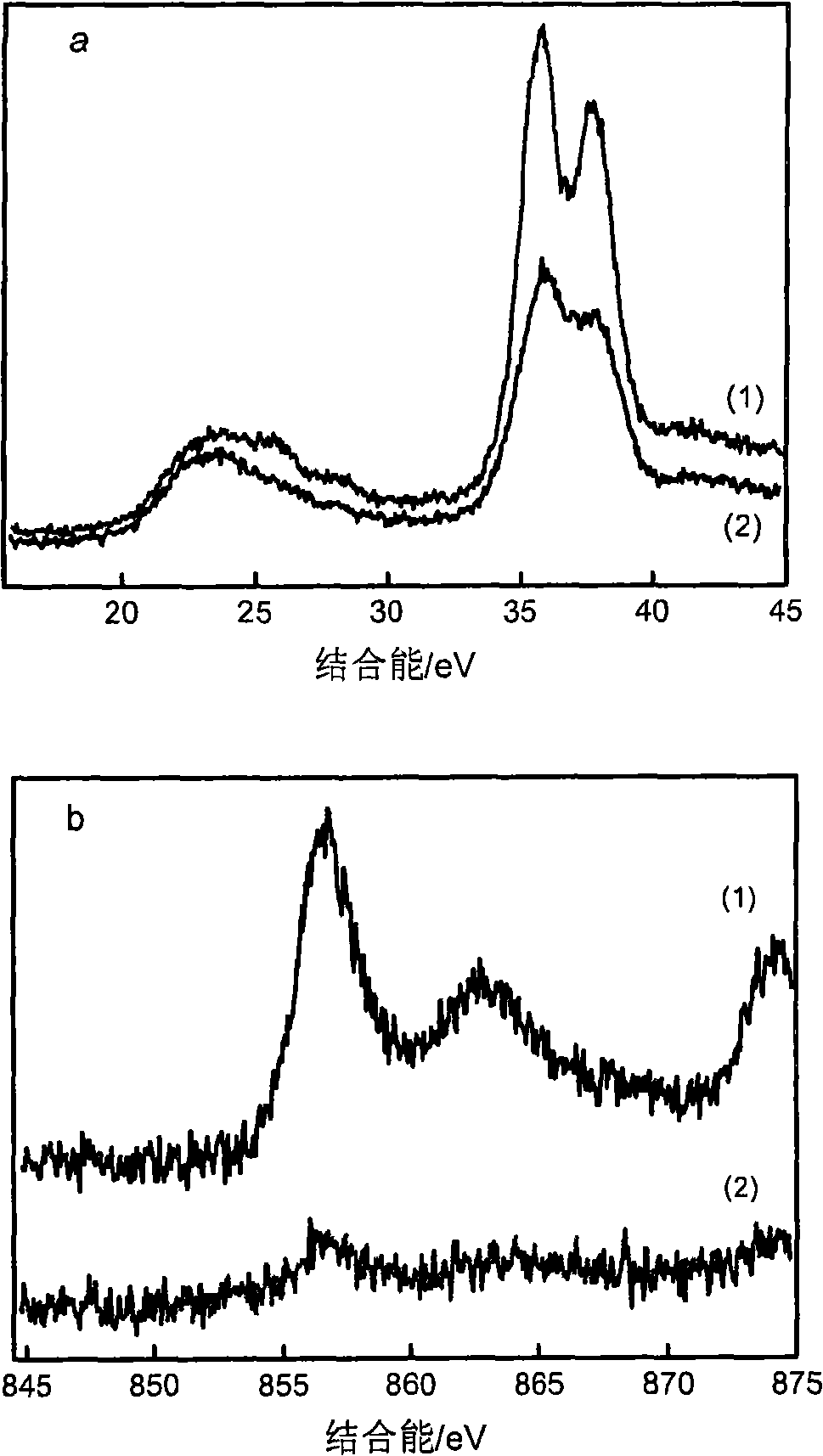Preparation of hydrogenation catalyst
A hydrogenation catalyst and catalyst technology, applied in chemical instruments and methods, physical/chemical process catalysts, metal/metal oxide/metal hydroxide catalysts, etc. Problems such as the accumulation degree of active components and the difficulty of vulcanization of active components can achieve the effects of reducing the amount of metal active components, avoiding agglomeration, and reducing the size
- Summary
- Abstract
- Description
- Claims
- Application Information
AI Technical Summary
Problems solved by technology
Method used
Image
Examples
Embodiment 1
[0030] Weigh 20-40 mesh γ-Al 2 o 3 Put 5g of carrier into a 100ml autoclave, add 0.1mol / l sodium tungstate solution 47.77ml, then add 2.4mol / l hydrochloric acid 3.98ml, stir evenly, add surfactant CTAB 0.8706g (molar ratio WO 4 2- : CTAB=1:0.5), heated up to 150°C, stirred for 24 hours, cooled to room temperature, filtered the suspension, washed with water, dried at 110°C for 2 hours, and calcined at 550°C for 4 hours to obtain W / Al 2 o 3 ;W / Al 2 o 3 Put it into the autoclave again, add 33.50ml of 0.06mol / l nickel nitrate solution, stir, add 0.2415g of urea, stir and react at 90°C for 8 hours, then raise the temperature to 137°C and stir for 4 hours, cool to room temperature, and suspend Liquid filtration, washing with water, drying at 110°C for 2 hours, and calcining at 550°C for 4 hours to obtain NiW / Al 2 o 3 Hydrofining catalyst S1, the contents of nickel and tungsten oxides in the catalyst are listed in Table 1, and the contents of nickel and tungsten were measured ...
Embodiment 2
[0032] Weigh 20-40 mesh γ-Al 2 o 3 Put 5g of carrier into a 100ml autoclave, add 52.13ml of 0.1mol / l sodium tungstate solution, then add 4.34ml of 2.4mol / l hydrochloric acid, stir evenly, add surfactant CTAB 0.95g (molar ratio WO 4 2- : CTAB=1:0.5), heated up to 150°C, stirred for 24 hours, cooled to room temperature, filtered the suspension, washed with water, dried at 110°C for 2 hours, and calcined at 550°C for 4 hours to obtain W / Al 2 o 3 ;W / Al 2 o 3 Put it into the autoclave again, add 34.06ml of 0.06mol / l nickel nitrate solution, stir, add 0.2455g of urea, stir and react at 90°C for 8 hours, then raise the temperature to 137°C and stir for 4 hours, cool to room temperature, and suspend Liquid filtration, washing with water, drying at 110°C for 2 hours, and calcining at 550°C for 4 hours to obtain NiW / Al 2 o 3 Hydrofining catalyst S2, the contents of nickel and tungsten oxides in the catalyst are listed in Table 1.
Embodiment 3
[0034] Weigh 20-40 mesh γ-Al 2 o 3 Put 5g of carrier into a 100ml autoclave, add 30.5ml of 0.1mol / l sodium tungstate solution, then add 2.54ml of 2.4mol / l hydrochloric acid, stir evenly, add surfactant CTAB 0.5552g (molar ratio WO 4 2- : CTAB=1:0.5), heated up to 150°C, stirred and reacted for 24 hours, took out the autoclave and cooled to room temperature, filtered the suspension, washed with water, dried the obtained solid product at 110°C for 2 hours, and roasted at 550°C for 4 hours to obtain W / Al 2 o 3 ;W / Al 2 o 3 Put it into the autoclave again, add 19.31ml of 0.06mol / l nickel nitrate solution, stir, add 0.1391g of urea, seal and stir at 90°C for 8 hours, then raise the temperature to 137°C and stir for 4 hours, cool to room temperature, The suspension was filtered, washed with water, dried at 110°C for 2 hours, and calcined at 550°C for 4 hours to obtain NiW / Al 2 o 3 Hydrofining catalyst S3, the contents of nickel and tungsten oxides in the catalyst are listed i...
PUM
 Login to View More
Login to View More Abstract
Description
Claims
Application Information
 Login to View More
Login to View More - R&D
- Intellectual Property
- Life Sciences
- Materials
- Tech Scout
- Unparalleled Data Quality
- Higher Quality Content
- 60% Fewer Hallucinations
Browse by: Latest US Patents, China's latest patents, Technical Efficacy Thesaurus, Application Domain, Technology Topic, Popular Technical Reports.
© 2025 PatSnap. All rights reserved.Legal|Privacy policy|Modern Slavery Act Transparency Statement|Sitemap|About US| Contact US: help@patsnap.com



